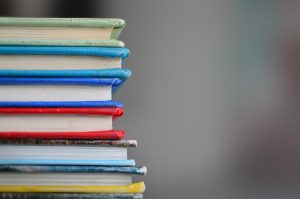Starting School: helping my daughter prepare for reception class
Starting school can feel scary. The Bear has just spent a wonderful year in nursery class. The way her school works, is that their pre-school nursery class is fully embedded in the school. That means she knows the classrooms; she knows a lot of the kids and she already knows the teacher who will be leading her through her reception year next year.
Starting school full time
The past year at school has done wonders for her confidence and also covered a lot of the basic skills she needs to see her through her school life. Simple things like putting on her own shoes, getting changed for PE, zipping up her own coat and going to the toilet on her own. Reception is where the real work starts though, and we’ve been given a little preview as to what she will be working on next in maths as well as language, literacy and communication. Some she is already there with – things like counting up to 10 objects, others (like her cursive writing) will need a lot of work. So, I thought I would share a few of the small things we have been working on this summer to help her prepare for her starting school full time in September.
Now many people may recoil at this though, thinking that summer is for fun only….and I agree to a certain extent. However, at her age the good thing is that all of these things can be adapted into summer fun, as words and numbers are all around us. It’s just a case of starting a conversation and talking about them when the opportunity arises. It’s about familiarity rather than actual work.
So, this is what we’re working on next to help with starting school.
Next Steps in Maths
- Counting up to 10 objects
- Looking at 3D shapes in the world around them
- Writing numbers correctly up to 10
10 activities to help them get there
The good news is that maths really is everywhere, practically every activity we do with our children involves maths. These are a few things that we’ve been working on to keep numbers alive for us over the summer.
- Play rockets in the back garden – it’s amazing how much fun 5, 4, 3, 2, 1….blast off can be!
- Look for 3D shapes in real life – think rectangular remote controls, conical traffic cones and spherical apples.
- Count things whenever you do them – laying the table, food on our play, stairs as we walk them. Anything with a number.
- Use songs wherever you can – “1 2 3 4 5, once I caught a fish alive” and “1, 2 buckle my shoe” are firm favourites for counting up and “10 green bottles, sitting on the wall” and “5 little monkeys jumping on the bed” for counting down.
- Number spotting – talk about numbers on buses, front doors and registration plates. Anything you can spot, ask them to tell you what they are.
- Number hunt – this was a suggestion from school, and I love it. Hide some cut-out numbers from 1-10 around the house and see if your little ones can find them you can find them. Ask them to shout the number out loud when they find it.
- Shop together – asking little ones to add the right number of fruit and veg etc you need into the basket.
- Play air shapes – draw a shape in the air and let little ones guess what it is.
- Explore shapes – identifying shapes and counting how many sides that they have and comparing different shapes
- Use the tablet – sometimes technology has its uses and there are so many fabulous counting apps out there, it’s worth taking a look at a few.
Next Steps in Language Literacy and Communication
- Try to use cursive writing when writing her name
- Independent writing – use scribbles / marks / some letters to represent words
- Sounds – what sounds can be heard at the start, middle and the end of the world
- Looking at books and ‘reading’ a story to the family
10 activities to help them get there
- Mark making – encourage your child to write / make marks not only on paper but on a variety of media and texture:
- Using pens on old rolls of wallpaper.
- Water and a paint brush on the floor.
- Sticks to write in the mud
- Fingers to write in salt or sand
- Play games – games such as I Spy are a great way of developing their sound knowledge
- Copying – simple activities to show your child how to write letters and words and then reading them back can make a big difference
- Putting it into practice – sit with your child when you write notes or make lists to show them how you use words day to day
- Visit the library – explore new books and take some home
- Explore sounds – explore the start, middle and ends of words making out all the sounds. Start with common words already in their vocabulary such as their name
- Variety – compare the different kinds of reading material available. Magazines, stories, reference books – how are they all different?
- Sign their name – encourage them to make their mark on any pictures they create over the summer
- Read and write everywhere – read whenever you can – letters in the post, words in a book, instructions for a game
- Jolly Phonics – this has played a huge part in the Bears pre-school. All the Jolly Phonics songs are on YouTube and are a great resource.
So, there we have it. A few things we are building into our summer fun just to start laying some groundwork ready for starting school full time in September. Have you been doing anything to prepare?






This is really useful Vicki, we’re just starting to look at things for commencing pre-school (our pre-school class is mixed in with the school’s reception class) and he’s such a sponge at the moment I want to run with that. One of the things we’re really struggling with is holding a pencil/pen/crayon properly – any tips?!
Repetition! I always let Henry make a few marks first then ask him to change his hand. We shake it saying ‘wiggle wiggle wiggle’ to losen his grip (as he holds is sooo tight when I try and move his fingers) and then position the pencil in the right place. Don’t stress about it though as school are fabulous for his and he’ll start copying the kids around him.